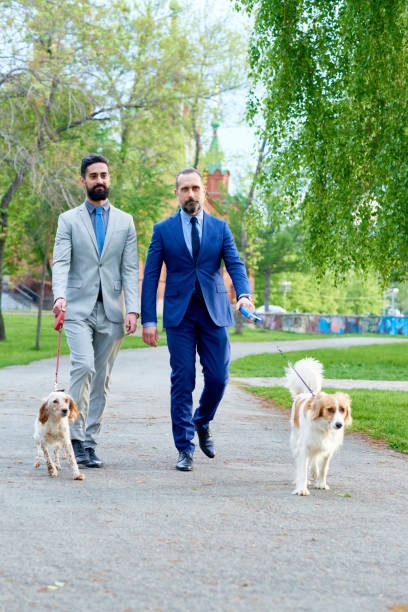Table of Contents
1. Introduction to Dog Walking Business Insurance
2. Why Dog Walking Businesses Need Insurance
3. Types of Insurance Coverage for Dog Walking Businesses
– General Liability Insurance
– Professional Liability Insurance
– Property Insurance
– Workers’ Compensation Insurance
4. Important Factors to Consider When Choosing Insurance
5. Common Risks in the Dog Walking Industry
6. How to Calculate Your Insurance Needs
7. Cost Factors Affecting Insurance Premiums
8. Resources and Support for Dog Walking Business Owners
9. Real-Life Case Studies: The Importance of Having Insurance
10. Future Trends in Dog Walking Business Insurance
Introduction to Dog Walking Business Insurance
Starting a dog walking business can be a rewarding venture, offering flexibility and the joy of spending time with pets. However, like any business, it comes with its own set of risks and challenges. Understanding dog walking business insurance is crucial for safeguarding your investment, protecting yourself from liabilities, and ensuring a smooth operation. This guide delves into the specifics of insurance tailored for dog walkers, providing insights that help you make informed decisions.
Why Dog Walking Businesses Need Insurance
Insurance is not merely an optional safety net; it is a fundamental aspect of running a dog walking business. Here are several key reasons why dog walking businesses require insurance:
– Risk Mitigation: Every time you walk a dog, there is a risk involved – from potential injuries to the dogs themselves or accidents involving other people or pets.
– Legal Protection: In the event of lawsuits due to accidents or injuries, having appropriate insurance coverage can protect your finances and reputation.
– Client Trust: Many pet owners will look for insured walkers as it provides peace of mind that their beloved animals are in safe hands.
– Business Growth: As your business expands, having insurance can facilitate partnerships with other pet service providers or allow you to take on more clients without added risk.
Types of Insurance Coverage for Dog Walking Businesses
Understanding the various types of insurance available can help you choose the right coverage for your specific needs.
General Liability Insurance
General liability insurance is typically the most critical coverage for dog walkers. It protects against third-party claims for bodily injury or property damage that occur during your services.
– Coverage includes:
– Injuries sustained by clients or their pets while under your care.
– Damage to clients’ property caused by negligence.
Professional Liability Insurance
Also known as errors and omissions insurance, this coverage protects against claims arising from professional mistakes or negligence in your services.
– Examples include:
– Miscommunication regarding pet care instructions leading to an incident.
– Failure to provide proper care resulting in harm.
Property Insurance
If you operate your business from home or have equipment necessary for dog walking (such as leashes, harnesses, or specialized gear), property insurance can cover damages or losses.
– Key points:
– Covers theft, vandalism, and natural disasters.
– May also include coverage for your vehicle if used in business operations.
Workers’ Compensation Insurance
If you hire employees or independent contractors, workers’ compensation insurance is essential. This coverage provides benefits to workers injured on the job.
– Benefits typically include:
– Medical expenses.
– Lost wages during recovery.
– Rehabilitation costs.
Important Factors to Consider When Choosing Insurance
When selecting insurance for your dog walking business, consider the following factors:
– Business Structure: Whether you operate as a sole proprietor or have employees affects your insurance needs.
– Location: Different regions may have varying regulations and risks associated with dog walking.
– Types of Services Offered: Services beyond walking (like pet sitting) may require additional coverage.
– Client Requirements: Some clients may insist on specific insurance coverages before hiring you.
Common Risks in the Dog Walking Industry
Understanding common risks will help you navigate potential pitfalls in the dog walking profession:
– Dog Bites: Even well-behaved dogs can act unpredictably due to stress or fear.
– Traffic Accidents: Walking dogs near busy streets increases the risk of accidents.
– Injuries to Dogs: Dogs can sustain injuries while walking, such as cuts from broken glass or sprains from overexertion.
– Property Damage: Dogs can dig up gardens or chew on furniture, leading to disputes with clients.
How to Calculate Your Insurance Needs
Calculating your specific insurance needs involves assessing several variables:
1. Evaluate Risks: Identify all potential risks associated with your services.
2. Estimate Revenue: Higher revenue often leads to higher liability exposure; consider this when deciding coverage limits.
3. Assess Client Needs: Determine what type of insurance coverage your clients expect from you.
Consider using an insurance broker specializing in pet services; they can provide tailored advice based on your unique situation.
Cost Factors Affecting Insurance Premiums
The cost of premiums can vary widely based on several factors:
– Experience Level: New businesses may pay higher premiums until they establish a track record.
– Location: Urban areas may present higher risks than rural settings.
– Coverage Limits: Higher limits typically lead to increased premiums but offer better protection.
– Claims History: A history of claims can raise rates significantly.
To optimize costs, regularly shop around and compare quotes from different insurers while ensuring you maintain adequate coverage levels.
Resources and Support for Dog Walking Business Owners
As a dog walker, numerous resources can assist you in understanding and obtaining the right insurance:
– Professional Associations: Organizations like Pet Sitters International provide guidance on best practices and insurance recommendations.
– Networking Groups: Joining local pet service groups can offer support and shared experiences regarding insurance needs and providers.
– Online Forums and Communities: Engaging in discussions with fellow professionals can provide insights into which insurers they recommend and why.
Real-Life Case Studies: The Importance of Having Insurance
Case Study 1: A dog walker was sued after a client’s dog got into a fight with another dog during a walk. The owner claimed negligence on the walker’s part. Fortunately, the walker had general liability insurance which covered legal fees and damages.
Case Study 2: A dog sustained an injury while being walked near construction sites; the owner demanded compensation for veterinary bills. The walker’s professional liability policy helped cover these unexpected costs without impacting their finances significantly.
These examples illustrate how effective insurance can protect against unforeseen circumstances that could otherwise jeopardize a business’s future.
Future Trends in Dog Walking Business Insurance
As the pet service industry evolves, so too does its relationship with insurance:
– Increased Customization: Insurers are beginning to offer more tailored policies specific to individual business needs based on services provided.
– Technology Integration: Usage of apps and online platforms is changing how services are booked and managed; insurers may adapt policies accordingly.
– Focus on Wellness Programs: As awareness grows about canine health, some insurers may start offering discounts for walkers who participate in training programs focused on canine behavior and safety.
Understanding these trends allows current and aspiring dog walkers to stay ahead and ensure their operations are adequately protected as they grow their businesses.
In summary, comprehending the nuances of dog walking business insurance is crucial not just for compliance but also for establishing a sustainable operating model that prioritizes safety for both pets and owners alike. By assessing risks appropriately and investing in suitable coverage, you set yourself up not only for success but also peace of mind as you navigate this fulfilling field.



